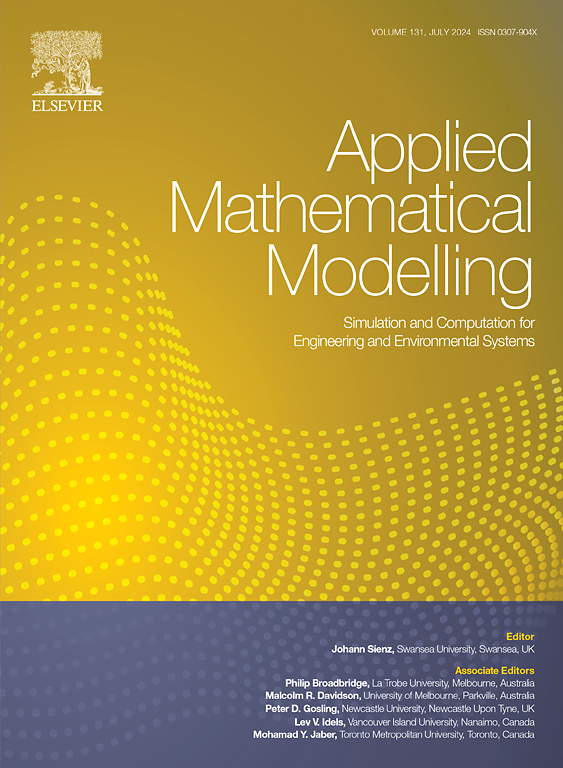确定时间分数模型中的通量项
IF 4.4
2区 工程技术
Q1 ENGINEERING, MULTIDISCIPLINARY
引用次数: 0
摘要
本文研究了一类具有一般源函数的非线性时间分数黏弹性方程的通量辨识问题。我们首先通过证明解对热通量的存在性、唯一性和连续依赖性,建立了直接问题的适定性。其次,我们证明了代价函数的fracimet可微性,为求解逆问题提供了理论基础。为了有效地重建未知通量,在导出的梯度公式的基础上,提出了一种共轭梯度算法。最后,通过无噪声和有噪声数据的数值实验验证了该方法的有效性和鲁棒性,验证了该方法的准确性和实用性。本文章由计算机程序翻译,如有差异,请以英文原文为准。
Determining flux terms in a time fractional model
In this paper, we investigate the flux identification problem for a nonlinear time-fractional viscoelastic equation with a general source function, using boundary measurements. We first establish the well-posedness of the direct problem by proving the existence, uniqueness, and continuous dependence of the solution on the heat flux. Next, we demonstrate the Fréchet differentiability of the cost functional, providing a theoretical foundation for solving the inverse problem. To efficiently reconstruct the unknown flux, we develop a Conjugate Gradient Algorithm based on the derived gradient formula. Finally, we validate the effectiveness and robustness of our approach through numerical experiments, including both noise-free and noisy data, confirming its accuracy and practical applicability.
求助全文
通过发布文献求助,成功后即可免费获取论文全文。
去求助
来源期刊

Applied Mathematical Modelling
数学-工程:综合
CiteScore
9.80
自引率
8.00%
发文量
508
审稿时长
43 days
期刊介绍:
Applied Mathematical Modelling focuses on research related to the mathematical modelling of engineering and environmental processes, manufacturing, and industrial systems. A significant emerging area of research activity involves multiphysics processes, and contributions in this area are particularly encouraged.
This influential publication covers a wide spectrum of subjects including heat transfer, fluid mechanics, CFD, and transport phenomena; solid mechanics and mechanics of metals; electromagnets and MHD; reliability modelling and system optimization; finite volume, finite element, and boundary element procedures; modelling of inventory, industrial, manufacturing and logistics systems for viable decision making; civil engineering systems and structures; mineral and energy resources; relevant software engineering issues associated with CAD and CAE; and materials and metallurgical engineering.
Applied Mathematical Modelling is primarily interested in papers developing increased insights into real-world problems through novel mathematical modelling, novel applications or a combination of these. Papers employing existing numerical techniques must demonstrate sufficient novelty in the solution of practical problems. Papers on fuzzy logic in decision-making or purely financial mathematics are normally not considered. Research on fractional differential equations, bifurcation, and numerical methods needs to include practical examples. Population dynamics must solve realistic scenarios. Papers in the area of logistics and business modelling should demonstrate meaningful managerial insight. Submissions with no real-world application will not be considered.
 求助内容:
求助内容: 应助结果提醒方式:
应助结果提醒方式:


